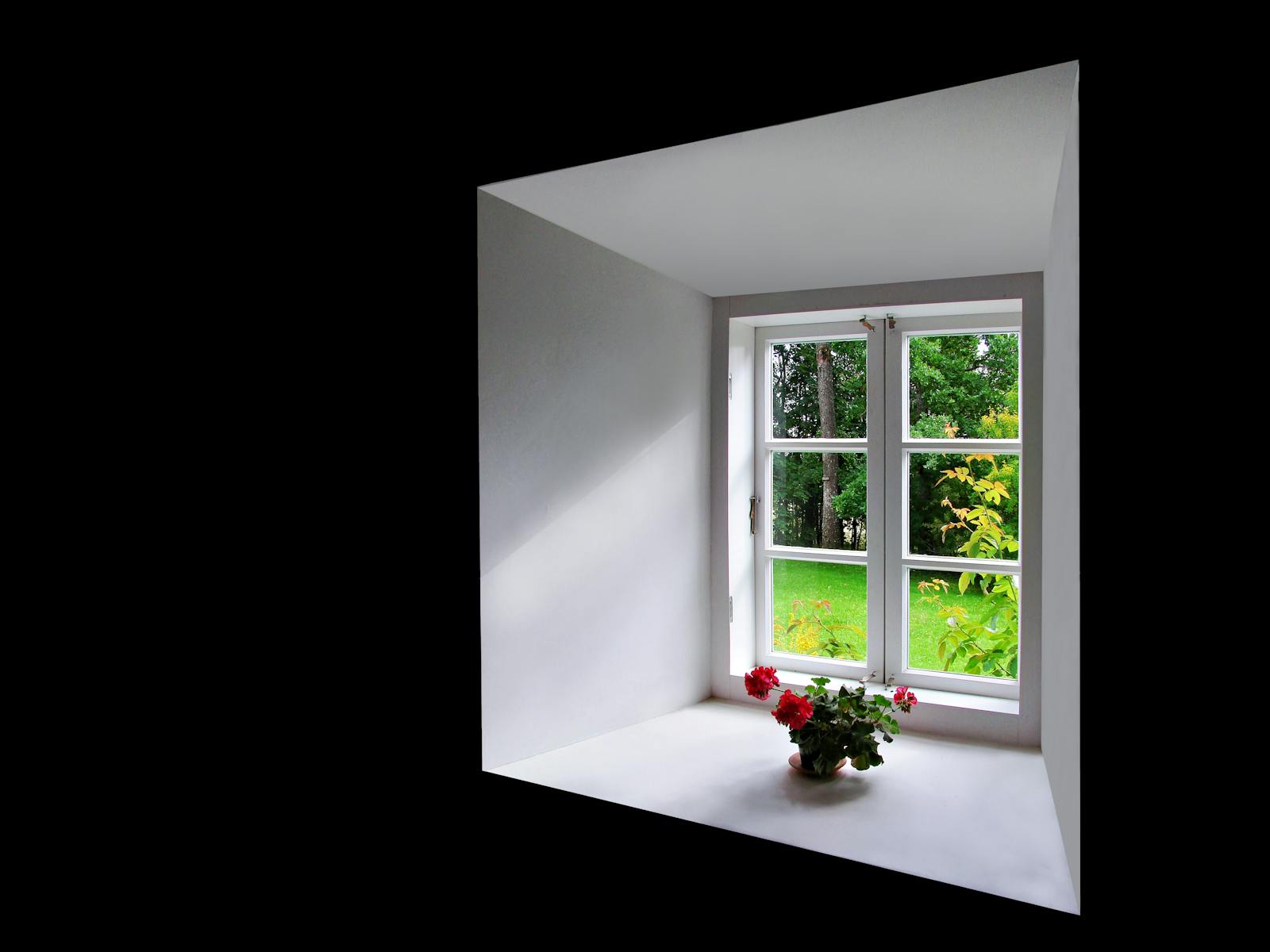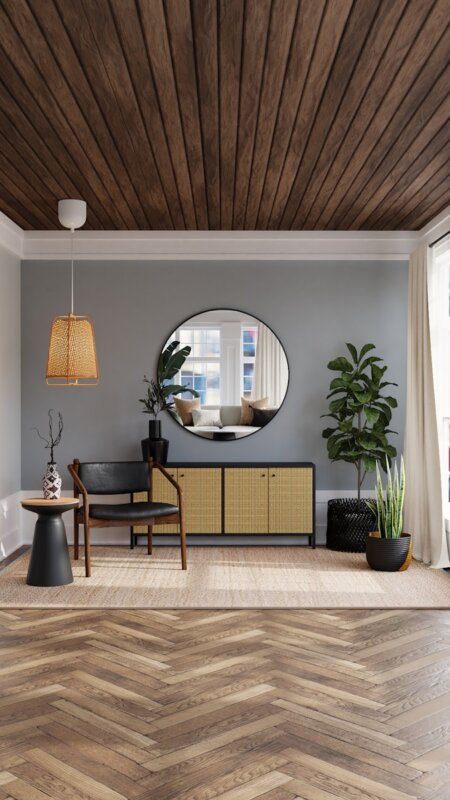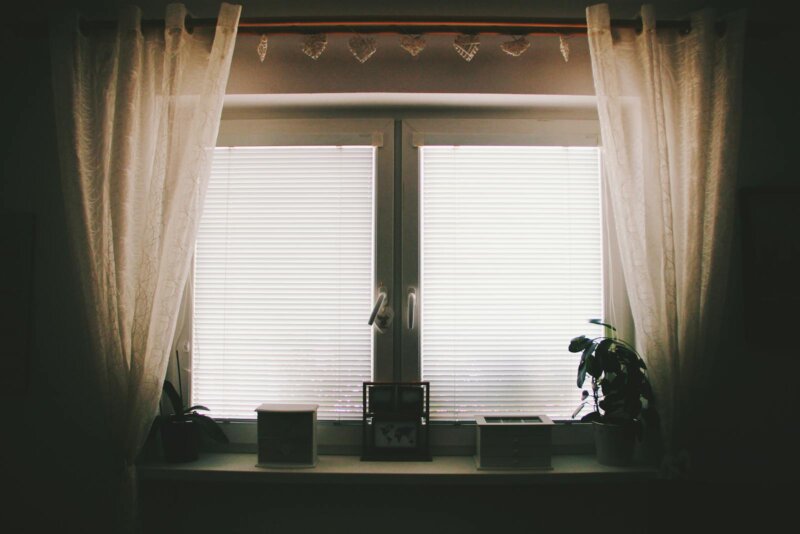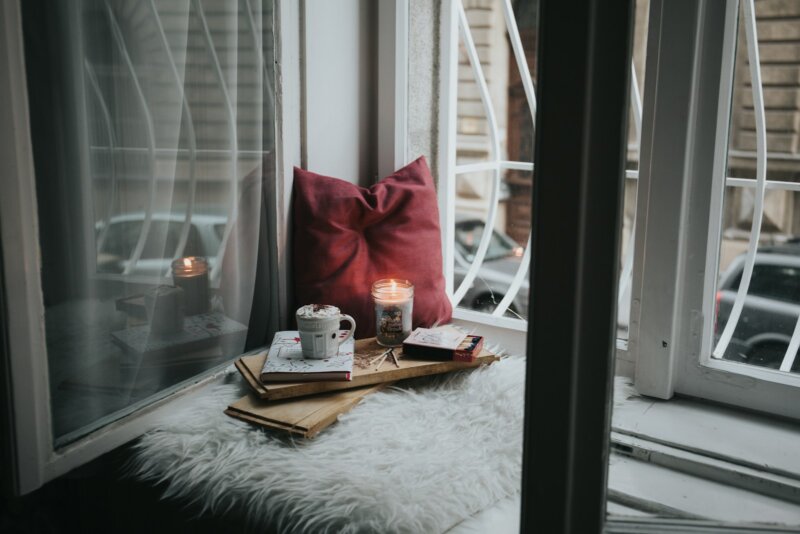Want brighter rooms without tearing down walls? Small, smart changes can do it. Use mirrors, sheer curtains, and color to boost daylight and brightness. With a few tweaks, you can maximize natural light without renovating and make every space feel open.
Keep Windows Clean and Clear
Clean glass lets sunlight pour in. Clear panes increase natural illumination and make rooms feel larger. Start here for the biggest impact at low cost.
Remove obstructions like bushes or furniture
Overgrown plants block daylight before it reaches the windows. Trim shrubs and low tree branches near the glass. Keep outdoor decor away from the sill, so sunlight has a clear path inside.
- Cut back bushes to below window height.
- Move grills, planters, and storage bins out of the window zone.
- Shift bulky furniture a foot or more from the glass.
A crowded window casts shadows and reduces brightness. Couches, tall shelves, and headboards stop light from spreading. A quick layout change can lift the mood of the room. Wear gloves and eye protection when trimming plants; safety matters.
Regularly clean windows for maximum light entry
Dust, pollen, and water spots can block a lot of sunlight. Clean both sides of the glass for a clear view and better lighting. You may use a soft cloth, mild soap, and warm water. A squeegee helps prevent streaks.
Brighter rooms look bigger and more welcoming. More daylight can support your circadian rhythm, your internal body clock, which helps sleep. Clean windows may even lower lighting costs, since you turn on fewer lamps.
Work safely on ladders and near fragile glass. If windows are high or hard to reach, consider a pro cleaning once or twice a year.
Optimize Window Treatments
Simple window treatments can shape how sunlight enters your home. Aim for privacy without losing daylight. The right choice strengthens overall lighting and comfort.
Use sheer curtains or light-filtering shades
Sheer curtains let in soft light while keeping views gentle. Light-filtering shades are fabric blinds that glow with daylight, yet block harsh glare. Both options protect privacy and still boost brightness.
- Pick light colors like white, cream, or pale gray.
- Layer a sheer with a roller shade for control day and night.
- Use frosted film if fabric is not practical in kitchens or baths.
Place mirrors or glossy decor near these windows, and light will bounce deeper into the room. That can lift natural illumination without any major work.
Avoid heavy drapes that block natural light
Thick, dark drapes absorb sunlight and make rooms feel closed. Heavy fabric can drag down the look and reduce daylight. Spaces often appear smaller and less inviting.
Choose cotton, linen, or airy blends instead. Try layered treatments for privacy that still allow daylight. This lighter approach pairs well with mirrors in the next section.
Use Mirrors Strategically
Mirrors act like extra windows. They reflect sunlight across walls and ceilings, improving light distribution and brightness. This can help spaces with limited windows.
Place mirrors opposite windows to reflect light
Hang a mirror across from a window to bounce daylight back into the room. This simple move can brighten dark corners and add natural illumination. Mount it at or above eye level for even spread and less glare.
In a small living room, one large mirror can feel like a second window. It can make the space look wider and more open. Adjust the angle slightly if a bright hot spot appears.
Incorporate mirrored furniture or decor
Mirrored side tables, cabinets, or trays scatter light in useful ways. Glass or acrylic pieces keep sightlines open and help daylight travel. A set of small mirrors can create a focal wall and lift overall lighting.
Consider a mirrored backsplash in a kitchen or bath. Mirrored closet doors can brighten a bedroom and entry. Add a few metallic accents near windows for extra sparkle. Now, pair these ideas with the right paint and furniture.
Choose Light Paint and Furniture
Light colors reflect sunlight; dark colors absorb it. The right color palette can increase perceived space and lower lighting needs. Finishes matter too.
Opt for light-colored walls and ceilings
White and pale gray are bright and flexible. Soft pastels and beige also reflect well. A satin or semi-gloss finish, which has a gentle shine, bounces more light than matte paint.
- Use white, cream, or pale gray on ceilings to lift height.
- Paint trim in semi-gloss to catch and reflect sunlight.
- Keep large surfaces light for maximum brightness.
On small elements like moldings, high-gloss can add a crisp highlight. Light panels or beadboard in soft tones add style without dimming the room. Glossy or metallic furniture can increase reflectivity and support a brighter look.
Use furniture with glossy or metallic finishes
High-gloss paint, lacquer, and glass tabletops reflect daylight well. These surfaces push light deeper, which improves overall illumination. Slim, low-profile pieces also reduce shadows and keep an open space feel.
Glossy tile backsplashes brighten kitchens. Metallic vases and trays add light points. Glass or acrylic furniture keeps views clear, so sunlight travels across the room with ease.
Rearrange Furniture
A quick layout change can improve sunlight flow from windows and glass doors. Small moves often deliver big gains in brightness.
Avoid placing large furniture in front of windows
Big sofas, bookcases, and dressers block daylight. They can create dark zones that lead to more artificial lighting. This can raise energy use and reduce comfort.
Keep tall pieces away from the glass. Try a window seat, a bench, or a low chair near the sill. Choose light-colored fabrics to reflect sunlight and keep the room bright.
Create open spaces near light sources
Leave clear paths beside windows and doors, and daylight will reach farther. Move desks and reading chairs close to natural light to cut lamp time. Use open shelving so light can pass through.
Polished tables near light sources can reflect beams across the room. Refresh the layout every few months to suit the season. This habit supports better interior design and steady brightness.
Bottom Line
Let sunlight shape the mood of your home. Use sheer curtains, mirrors, and light paint to increase brightness and natural illumination. Keep windows clean, move bulky furniture away from glass, and open up pathways for daylight.
These simple updates can maximize natural light without renovating. They can also save energy and make each room feel calm and open. Start with one window today, then build from there for a brighter home.







